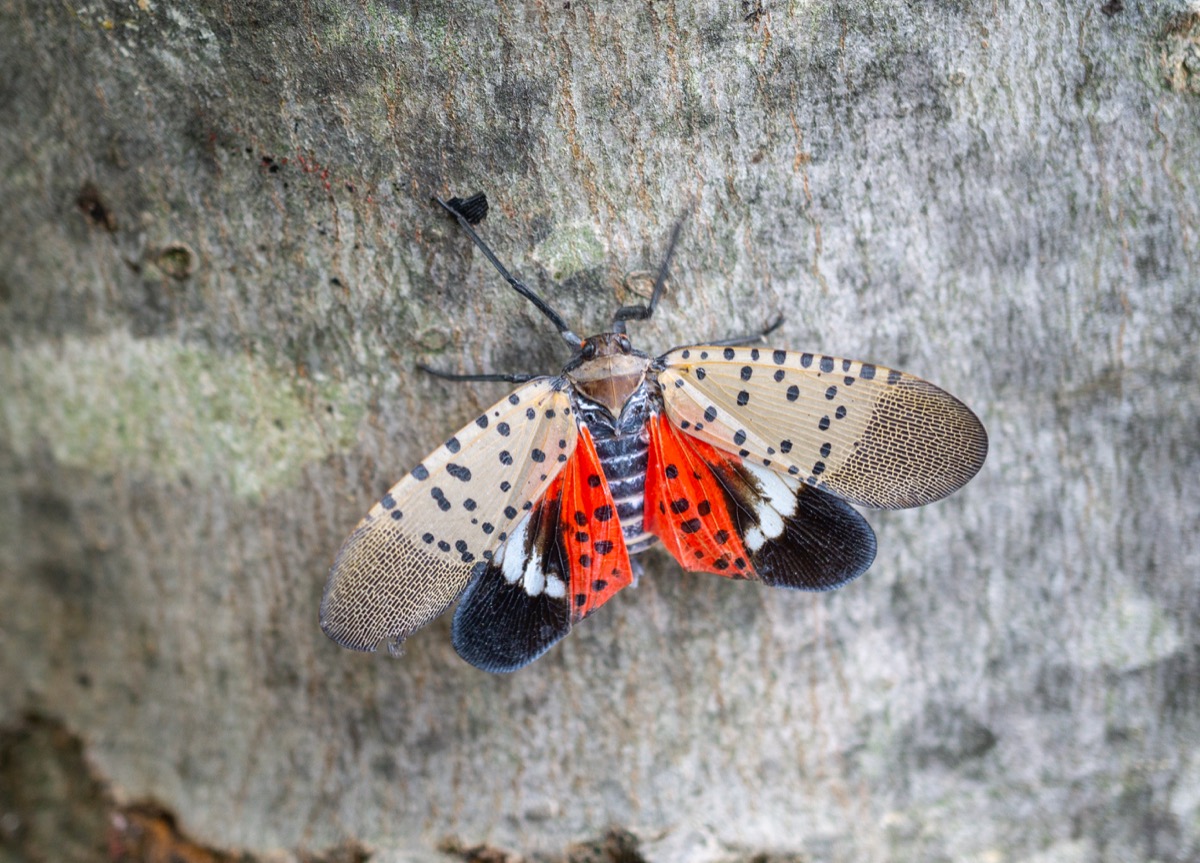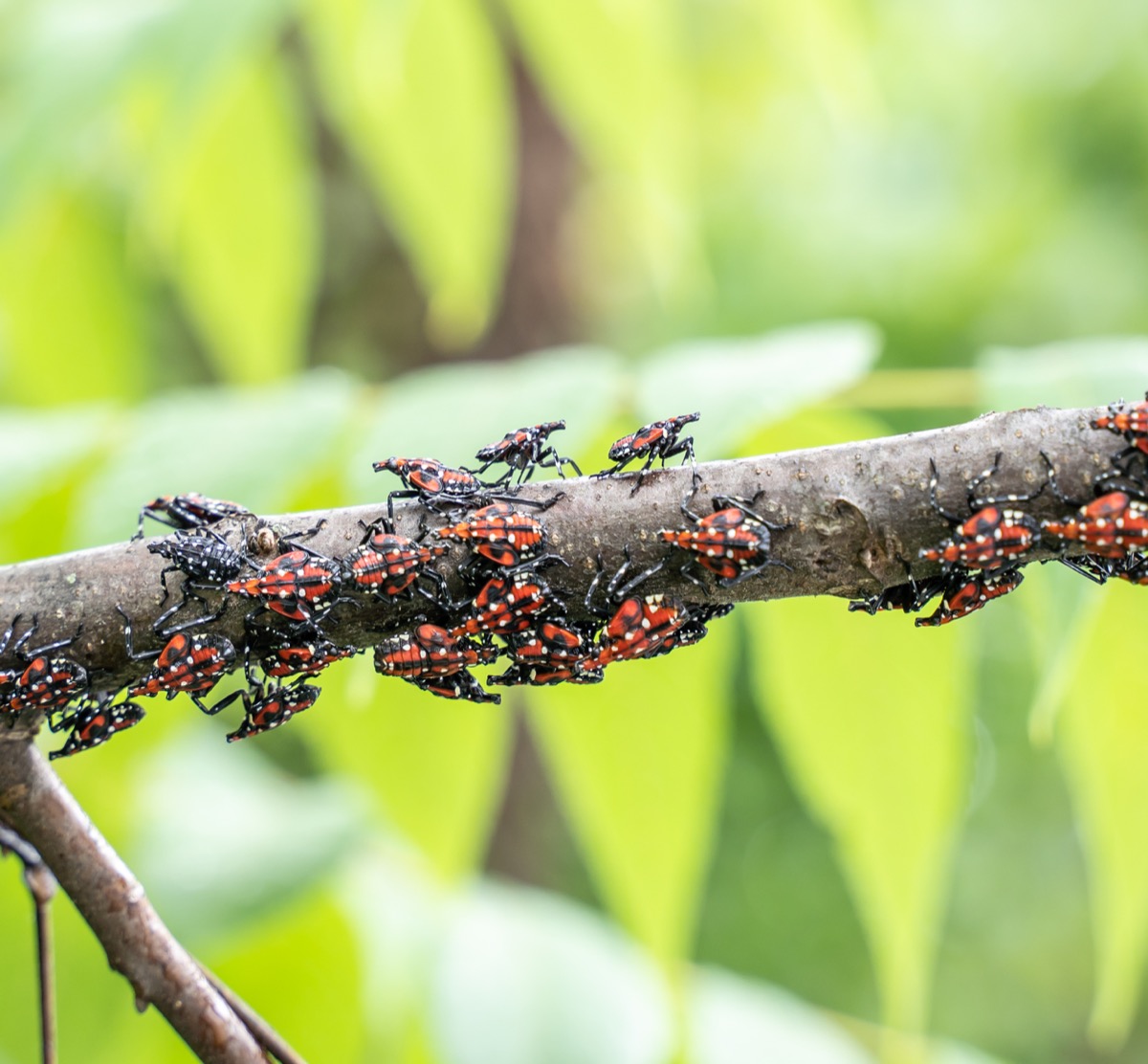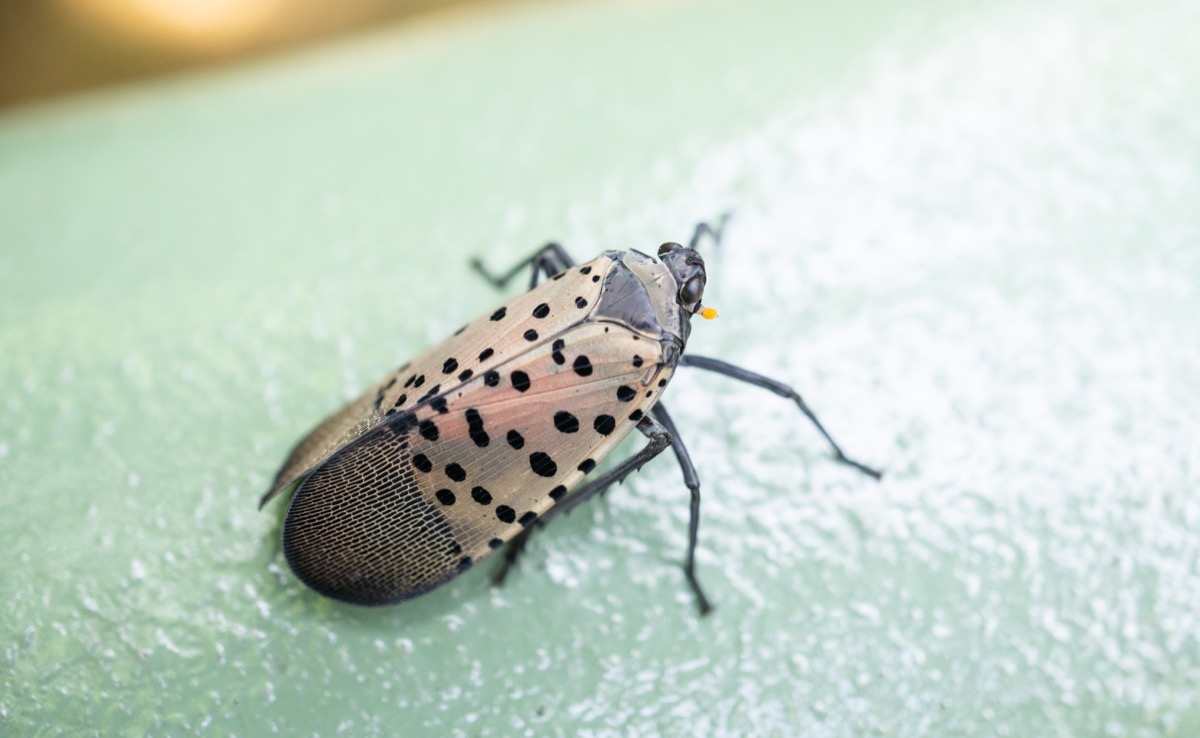If You See This in Your Yard, Prepare for a Bug Invasion, USDA Says

Spring is right around the corner, bringing with it warmer weather and more hours of sunlight. Unfortunately, the season also promises the return of some unwelcome pests. The U.S. Department of Agriculture (USDA) is warning Americans that a widespread pest from last year, the spotted lanternfly, is making a comeback soon. Throughout the winter, you may have been unknowingly surrounded by signs in your own backyard that these bugs will be returning. The USDA says you can mitigate the reemergence of these bugs if you see this in your yard and take fast action. To learn what you should keep an eye out for, read on, and for more bugs that will be taking over soon, If You Live Here, Prepare for a Major Bug Infestation, Expert Warns.
Spotted lanternflies will be returning next month.

Last summer, spotted lanternflies made headlines when New Jersey and Pennsylvania put a combined 34 counties under quarantine due to their presence. While the bug may look beautiful, with a stripped bee-like body and a pair of sheer wings atop a set of red wings—both sporting chic black spots—it wreaks havoc on crucial crops. NBC Philadelphia reports the spotted lanternfly is set to reemerge in a month.
Last winter, before dying off, adult spotted lanternflies laid eggs, which will soon give way to a whole new swath of pests. One egg sac can hold 30 to 50 eggs, according to Pennsylvania State University. The USDA is now asking people who see these egg sacs to destroy them in a specific way. And for another bug making its dreaded return, These Awful Bugs You Forgot About May Soon Come Back, Exterminators Warn.
If you see a spotted lanternfly egg sac, destroy it.

Before the eggs spawn new life next month, the USDA asks anyone that spots an egg sac to destroy it. NBC says the egg sacs can be spotted on almost any flat outdoor surface, including trees, wood pallets, and dumpsters, but the sacs are often well camouflaged. You’ll want to look out for dark-colored masses with several bumps on them.
The egg sacs can resemble “cracked light tan or maybe gray splotches of mud,” per Penn State. When you spot a mass, the USDA asks that you “scrape egg masses into a plastic bag containing hand sanitizer or rubbing alcohol to kill them.” Additionally, once these bugs have emerged, the USDA wants you to crush any that you see. And for more pests to look out for, If You See This Venomous Spider, Keep Your Distance.
Destroying these bugs helps protect essential crops.

While killing budding bugs may seem cruel, it will ultimately prevent them from destroying critical crops once they hatch. The USDA says if the spotted lanternflies are left to their own devices, they could negatively impact the economy.
The spotted lanternflies can severely affect crops, including almonds, grapes, stone fruits, apples, hops, and a variety of trees. Additionally, the bugs leave behind a black residue called “honeydew” that attracts bees, promotes mold growth, and can disrupt photosynthesis, according to NBC. And for more up-to-date information, sign up for our daily newsletter.
Be careful not to transport these bugs.

The spotted lanternfly first landed in North America in 2014, likely hitching a ride on a shipment from China, according to the USDA. The insect has since been spotted in 11 eastern states (Connecticut, Delaware, Massachusetts, Maryland, North Carolina, New Jersey, New York, Pennsylvania, Virginia, and West Virginia). If you live in one of these states, you need to be careful not to transport the bugs to another area, especially one where they’ve not been spotted.
The USDA asks that you check your vehicle before driving to see if you spot any lanternflies or their eggs. “Check doors, sides, bumpers, wheel wells, grills, and roofs,” the agency cautions. “If found, destroy any eggs or insects you find.” And for more signs of infestation, If Your House Smells Like This, You May Have a Bug Problem.